
Continue reading Upcoming Apple Products Guide: Everything We Expect to See in 2020 and Beyond
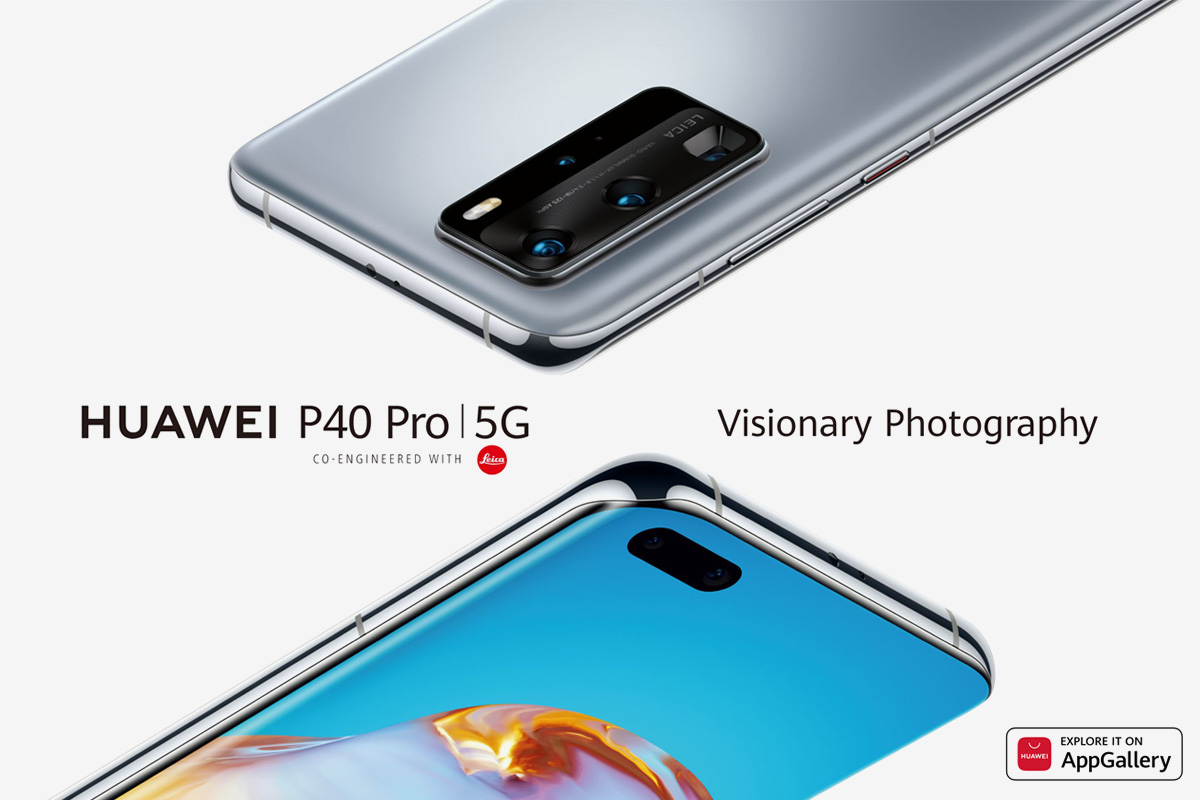
Huawei Consumer Business Group (BG) today announced the HUAWEI P40 Pro+, HUAWEI P40 Pro and HUAWEI P40, the new HUAWEI P40 Series flagship smartphones featuring cutting-edge designs with ground-breaking camera innovations that radically expand mobile photography and video capture possibilities.
The HUAWEI P40 Series continues the series’ heritage of imaging excellence. The large 1/1.28-inch sensor has a binned pixel size measuring 2.44 μm to massively boost light intake for enhanced low-light performance, while a new periscope design realises 10x true optical zoom. The HUAWEI P40 Series is powered by Kirin 990 5G and supports high-speed 5G and Wi-Fi 6 Plus. The advanced hardware is embedded in a beautiful and compact enclosure featuring the HUAWEI Quad-curve Overflow Display that delivers outstanding fluidity and responsiveness.
Richard Yu, CEO of Huawei Consumer BG, “The HUAWEI P Series has always been about innovative aesthetics and making premium imaging hardware accessible, representing the very best of industrial design and technology. With an outstanding sensor, camera systems that we co-engineered with Leica, powerful chipset and HUAWEI XD Fusion Engine, the HUAWEI P40 Series exemplifies our focus and offers an all-day Super Definition experience to help consumers realise their creative vision.”
Unprecedented design
The HUAWEI P40 Pro and HUAWEI P40 Pro+ are equipped with the HUAWEI Quad-curve Overflow Display. Inspired by the art of motion, the display takes on a curved edge on all four sides, creating a shape that is reminiscent of water on the cusp of overflowing from the rim of a filled cup. The super narrow bezels and streamlined round corners ensure an ergonomic hold and a near borderless look, while an enhanced in-screen fingerprint reader offers 30 percent faster biometric authentication.
Available in three glossy glass finishes – Ice White, Deep Sea Blue and Black – and two innovative refractive matte glass finishes – Blush Gold and Silver Frost, the HUAWEI P40 Pro and HUAWEI P40 exude classical elegance from every angle. HUAWEI P40 Pro+ features an exquisite nano-tech ceramic back panel that is kilned and polished to ensure it stands the test of time with incredible durability and timeless style. This unique design comes in two iconic colours: Ceramic White and Ceramic Black.
All-day Super Definition photography
Embedded in the HUAWEI P40 Series is the advanced Ultra Vision Leica camera system, available in triple-camera, quad-camera and penta-camera configurations. The HUAWEI P40 delivers outstanding photographic results with ultra wide-angle, wide-angle and telephoto lenses. The HUAWEI P40 Pro features an evolution of the Leica Quad Camera with a more powerful Ultra Wide Cine Camera and ToF Camera alongside 50x SuperSensing Zoom. The HUAWEI P40 Pro+ lets consumers see the unprecedented with the SuperZoom Array, which supports 10x true optical zoom and 100x maximum digital zoom.
The HUAWEI Ultra Vision Sensor included in the full HUAWEI P40 Series is Huawei’s largest CMOS sensor to date. Measuring 1/1.28 inches diagonally, it supports pixel binning to achieve a pixel size of 2.44 μm and Full Pixel Octa PD AutoFocus for high-speed focus at any time of day, while the HUAWEI XD Fusion Engine integrates and processes data from multiple cameras to generate a comprehensive improvement in picture quality.
HUAWEI P40 Pro brings faraway subjects up close with 5x optical zoom, 10x hybrid zoom and 50x maximum digital zoom. For the first time ever, the 5x Optical Telephoto Camera in the HUAWEI P40 Pro includes a RYYB colour filter array to boost light intake and improve quality of zoomed shots. HUAWEI P40 Pro+ has a 100x SuperZoom Array with a new periscope design that reflects light five times, extending the light path by 178 percent to support 10x true optical zoom. The optically stabilised Ultra Vision Wide Camera and SuperZoom Array work in tandem with AI to realise Triple OIS + AIS for vastly improved photo and video stabilisation.
Skin tone and texture are faithfully reproduced by a new Multi-spectrum Colour Temperature Sensor and AI AWB algorithm that boost colour accuracy by 45 percent. Deep learning algorithms provide real-time portrait optimisations that enhance lighting and detail. HUAWEI P40 Pro and HUAWEI P40 Pro+ have a 32 MP AF Camera and IR Depth Camera that support autofocus and Bokeh reproduction to deliver the same outstanding portrait effects that are signature to Huawei devices, as well as IR Face Unlock for device unlock even in low light conditions. HUAWEI P40 Series also introduces HUAWEI Golden Snap, which includes AI Best Moment, a new smart photography feature that chooses the best frames from a Moving Picture. AI Remove Passerby and AI Remove Reflection can do away with unwanted subjects and glare from the frame, allowing users to easily enhance their images after the fact.
A powerful pocket-sized video camera
The 40 MP Ultra Wide Cine Camera in HUAWEI P40 Pro and HUAWEI P40 Pro+ has a focal length that is equivalent to 18 mm and a 1/1.54-inch sensor supporting the 3:2 aspect ratio. SedecimPixel Fusion Technology is built into this camera to support 16-in-1 pixel binning, producing super pixels that measure 4.48 μm to boost light sensitivity up to ISO51200 and enable 7680 fps Ultra Slow-Motion video capture.
HUAWEI P40 Series supports real-time Bokeh effects for videos. Similar to the results of a wide aperture lens, this feature adds progressive Bokeh to help highlight the main subject of the footage. The telephoto camera can capture high quality zoom footage as well as 4K time-lapse videos. Directional Audio Zoom, available on HUAWEI P40 Pro and HUAWEI P40 Pro+, allows users to zoom in on an audio source and amplify its sound at the same time.
An all-connected 5G powerhouse
The HUAWEI P40 Series is powered by Kirin 990 5G to deliver integrated 5G connectivity with the most comprehensive 5G band support, robust AI performance and power efficiency. Display responsiveness and gaming experience are taken to the next level by the upgraded graphics rendering engine making the most of the 90 Hz panel on the HUAWEI P40 Pro and HUAWEI P40 Pro+. The 160 MHz Wi-Fi 6 Plus technology featured in the full line-up offers high-speed connectivity with support for 2400 Mbps peak theoretical transmission speed. The industry-leading 40 W Wireless HUAWEI SuperCharge is available on the HUAWEI P40 Pro+ for fast and convenient charging. The chipset is given the thermal headroom to deliver exceptional performance by the advanced cooling systems, including the bespoke 4-in-1 SuperCool system in the HUAWEI P40 Pro+.
The EMUI 10.1 operating system introduces a host of new features that enable a richer, more seamless AI life. HUAWEI MeeTime1 supports 1080 p Full HD video call on Huawei smartphones, tablets and the HUAWEI Vision TV and delivers clear picture quality even in low light or weak signal conditions. Users can also share their phone screen with the other party during the video call and mark-up notes to quickly share thoughts.
Huawei Share facilitates high-speed file transfer between the smartphone and other devices such as tablets and PCs. With Huawei Share on the HUAWEI P40 Series, consumers can stream music to a smart speaker, initiate screen projection and connect to Wi-Fi by tapping the device2 they want to connect to with their phone. New functionality added to the Multi-screen Collaboration allows users to easily answer video or voice calls hands-free directly through the PC, and open files and hyperlinks on the smartphone with native PC applications for enhanced productivity.
Working in close collaboration with global developers, Huawei offers a wide range of global and local apps on AppGallery, Huawei’s official app marketplace. Users can also enjoy a rich library of quality entertainment media on HUAWEI Video, HUAWEI Music and HUAWEI Reader, with new additions from top content providers being added on a continuous basis.
Alongside the HUAWEI P40 Series, Huawei also launched the HUAWEI WATCH GT 2e, HUAWEI Sound X and the latest Spring/Summer 2020 HUAWEI X GENTLE MONSTER Eyewear, further enriching its product portfolio of all-scenario products that are designed to help consumers live a better digital life.
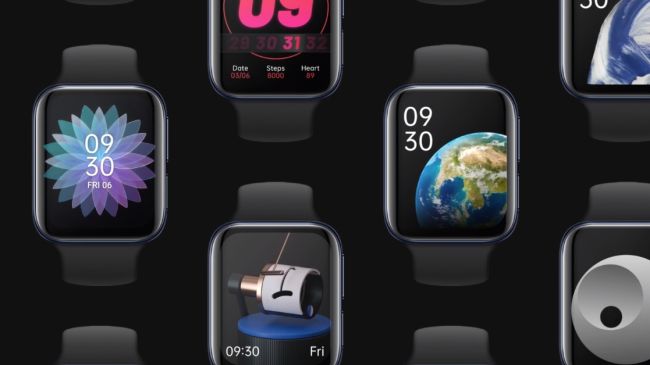
We knew Oppo was working on a wearable with more than a passing resemblance to the Apple Watch, but now the Oppo Watch has been announced in full, complete with a large and sharp OLED screen.
The display on the largest 46mm model is 1.91 inches and has a 473 x 402 resolution and 326 pixels per inch. For comparison, the largest Apple Watch 5 model has a 1.78-inch screen with a 448 x 368 resolution. Though there is also a smaller 41mm Oppo Watch model with a 1.6-inch, 360 x 320 screen.
Still, at the top end the Oppo Watch is larger and has a higher resolution than the Apple Watch 5, while retaining a similar design, complete with a square-ish screen with curved glass, and an 11.35mm thick aluminum or stainless steel frame.
It’s also water resistant up to 50 meters, has a heart rate monitor, and supports cellular connectivity via an eSIM.
The battery is 430mAh in the 46mm model and 300mAh in the 41mm one, and can apparently last 40 hours of regular use, which sounds like a fairly average amount, but switch to power-saving mode and Oppo claims it’ll run for up to 21 days. This mode will display notifications, but turns off many of the smart features.
And charging the Oppo Watch up should be fast, with the company saying it can go from zero to 100% in 75 minutes, or from zero to 46% (apparently enough for a day of life) in just 15 minutes.
The software could be a sticking point for some users, as this doesn’t run Wear OS or any of the other major smartwatch platforms. Rather, it runs Oppo’s own ColorOS Watch software. This is based on Android, though – like the hardware – it bears some resemblance to what you’ll find on the Apple Watch.

We’re not yet sure of the software’s full capabilities, but it can do general stuff like control music playback and track exercise and sleep.
Oddly, the Oppo Watch is powered by the Snapdragon Wear 2500 chipset, which isn’t one of the most powerful smartwatch chipsets, but then maybe lots of power isn’t needed with Oppo’s OS. There’s also 1GB of RAM and 8GB of storage in all models.
The big remaining question is if and when you’ll be able to buy the Oppo Watch, and how much for. Today’s launch was just for China, where it will start at CNY 1,499 (around $215 / £165 / AU$325), but don’t expect an exact conversion when it launches elsewhere.
Oppo has told us that its watch will come to Europe at a later date, so those in the UK at least will likely be able to buy it without importing it, but we’re not sure when. We’ll update you as soon as we learn more.
Source: Tech Radar

A report earlier this week suggested that the upcoming iPhone 12 may support a new WiFi spec, 802.11ay. This would pretty surprising, as the standard is so new the spec hasn’t even be finalized, and Apple normally waits a while before adopting new tech – as we’ve seen for everything from 3G onward.
A piece today speculates that Apple’s interest in this might be for connectivity with the long-rumored Apple Glasses …
MacWorld’s Jason Cross starts by explaining that 802.11ay is effectively the reinvention of something first created a decade ago: gigabit WiFi.
About 10 years ago, the Wireless Gigabit Alliance (a group of companies including Apple, Intel, AMD, Broadcomm, Qualcomm, and others) got together to build a standard spec for wireless communication over the 60GHz frequency band. They called it WiGig because it offered gigabit speeds, but it’s official IEEE designation is 802.11ad [and it] never really caught on […]
802.11ay is the second coming of WiGig. Finally ratified in 2019, it’s a big enhancement to the WiGig protocol that still uses the 60GHz frequency range, but should travel further and provide a lot more bandwidth. One stream is up to 44 gigabits per second, and you could bond 4 streams for a total of 176 gigabits per second. That’s about as fast as HDMI 2.1 for one stream! Of course, real-world performance will be much lower, but it’s still a dramatic improvement over the Wi-Fi you’re used to.
But given that 802.11ay still lacks the ability to penetrate walls, what good would it be in an iPhone? Cross echoes our own Benjamin Mayo’s suggestion that it would make for much faster AirDrop, which could be useful when sending large video files between Apple devices. But he speculates that the bigger reason for Apple’s interest could be Apple Glasses.
The exciting part of 802.11ay is that it provides high enough bandwidth and low enough latency that it can be used to send data to high-resolution, high refresh rate displays. Like, say, virtual reality or augmented reality headsets.
Apple has long been rumored to be working on a headset or eyewear that does at least AR, maybe mixed AR and VR. All the processing for your AR/VR experience could happen in the headset itself, making it a completely standalone product, but doing so makes it bigger, heavier, more expensive, and shortens battery life. The alternative is to make the headset a relatively dumb set of displays and cameras, with all the processing happening on some sort of base station—like your new iPhone 12. An ultra-high speed, super low-latency connection like that provided by 802.11ay is a necessity to make that work.
Although the most recent report suggests we won’t actually see Apple Glasses hit the market until 2023, it would be in the company’s interest to have them be compatible with as many iPhones as possible, to maximize the sales opportunity. Putting the necessary tech into iPhones released ahead of time would make sense.
Concept image: Martin Hajek/iDrop News

Apple’s first earnings report for 2020 soundly beat Wall Street’s estimates, landing it an all-time quarterly revenue record: $91.8 billion (about £70.5bn, AU$135bn).Advertisement
What’s more important than this 9% year-over-year growth are the products that drove it – the iPhone 11 and iPhone 11 Pro, the AirPods and AirPods Pro, and the Apple Watch 3 and Apple Watch 5 – and what they tell us about Apple’s strategy going forward. The company also cited ‘services’ as a key revenue booster.
Yes, officially, Apple keeps things vague, saying that “iPhone, Wearables and Services drove all-time record revenue.” But we dove into the sales numbers and put on our analyst hat on to examine Apple’s bounce back from last year’s declines.
Why is this important? If Apple shifted its strategy recently (which we think it did), it’s likely to continue down this path to maximize profits and that may mean the company will continue to release similar products in 2020 and beyond. Here’s what we found.
Apple cites ‘wearables’ as a key revenue driver and, to us, that translates into sales of the Apple Watch 3. Yes, the new Apple Watch 5 likely drove a chunk of revenue given its higher price, but most people didn’t need an always-on screen – they bought into the idea of an Apple Watch at a reasonable price.
The Apple Watch 3 at $199 / £199 / AU$319 became too difficult to ignore for people who’d resisted Apple’s smartwatches previously, or who were stuck with the original Apple Watch and in a dire need of an upgrade to the watchOS 6software.
Apple doesn’t break down its ‘Wearable’ sales (in fact they’re lumped into ‘Wearables, Home, and Accessories’), but the company did say it had trouble keeping up with Watch 3 demand, according to Reuters, and that the Apple Watch accounted for 75% of all wearables purchases in its latest quarter.
The winning strategy? Think about it: when the Apple Watch first launched, it cost $349 / £299 / AU$499. Almost five years later, we have a wholly better smartwatch in the Apple Watch 3, and it’s $150 cheaper than 2015’s technology. The Apple Watch finally became affordable, and that’s been a win for everyone.

Apple’s AirPods – also lumped into the Wearables category – were popular this past Black Fridaybecause there were three kinds on sale at once (technically four kinds, as we often found the original AirPods 1st gen on sale ridiculously cheap).
Apple is known for expensive gadgets, but it has begun to appeal to a wider range of consumers who want to buy into the true wireless earbudsphenomenon. There’s something for nearly everyone with the AirPods without wireless charging, AirPods with wirelessly charging, and its top-of-the-line AirPods Pro.
The winning strategy? Apple continued to tout its prestige as a premium brand with its noise-canceling AirPods Pro, yet it kept in stock two other versions of the AirPods for a cheaper price – at least when it could make enough of them.

“I wish Apple would release a Pixel.” Someone actually said that to us after seeing the Google Pixel 3 camera quality in 2018. And we knew exactly what they meant. It was clear that Apple needed to play catch-up to hit a ‘super cycle’ of upgrades.
It did just that in September 2019 when the iPhone 11, iPhone 11 Pro and iPhone 11 Pro Maxlaunched with superior cameras, matching or exceeding the photo quality of flagship Android smartphones in 2019. The Pixel 4 didn’t wow us nearly as much.
Apple introduced a triple-lens camera with the two iPhone 11 Pro models, and a photo-fixing Night Mode on all three new iPhones. We don’t take many Slofies with the front-facing camera, but Apple marketed this slow-motion video feature as if it was the next big thing. Well played.
The winning strategy? iPhone 6 holdouts, stranded without a way to upgrade to iOS 13, finally had enough reason to upgrade to the iPhone 11, which had a camera that we found performed markedly better and, importantly, looked different. That hypnotic, trypophobia-triggering iPhone Pro cameras set the stage nicely.
Apple also doggedly pushed its trade-in program to reduce the advertised iPhone 11 price, which made it seem much cheaper. In the US, carrier-subsidized iPhones at one time cost $199 (carrier plans cost more over time), and while we aren’t back to that price, consumers aren’t being alarmed by the full retail price either.

Announced at separate launch events last year, Huami’s Amazfit GTR and Amazfit GTS are both receiving a new update. Following complaints of slow GPS performance and inaccurate readings, both watches are being updated with improved GPS speed and accuracy.

Amazfit GTR
According to Tizen Help, the firmware version 1.6.7.41 is being pushed to the Amazfit GTR 47mm while 0.1.0.47 is being seeded to the 42mm version. The Amazfit GTS is receiving version 0.0.8.37 in China.

Amazfit GTS
The Amazfit GTR did receive an update to allow the Always-On-Display to time out for increased battery endurance, but the GPS issues weren’t addressed until now.

The year 2020 is now upon us, and the gadgets are coming: specifically, a new Mi Watch Color smartwatch device from Xiaomi, which the Chinese tech giant has teased in a short new promo video.
While the video is hardly spilling over with details and specs, it does give us a few ideas about what to expect. For a start, the watch has a circular casing, unlike the squared design of the Mi Watch that debuted a couple of months ago.
We’ve got two buttons on the right of the dial and what seem to be replaceable straps as well. According to Gadgets360, the color options are going to be black, gold and silver, with a variety of strap choices.
What we don’t get from this promo is any idea what software the watch is running – though considering the Mi Watch had Wear OS on board, it would be a surprise if this Color variant didn’t.
Source: Tech radar
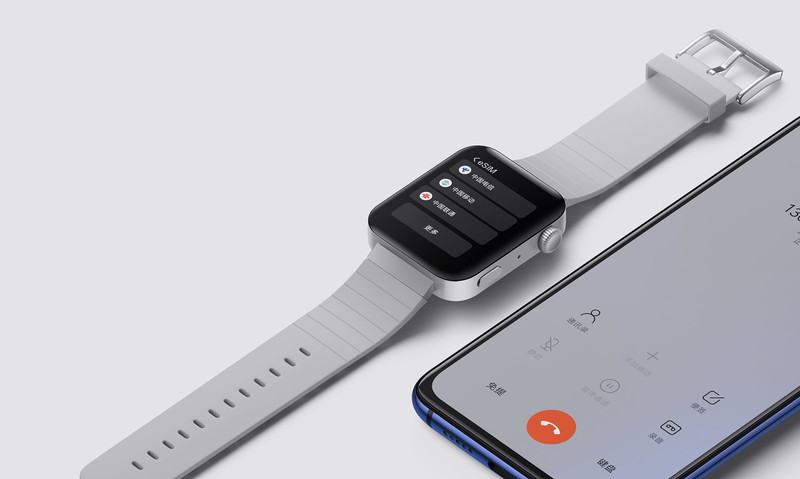
Xiaomi has officially unveiled the Mi Watch: an Apple Watch lookalike that runs a skinned version of Google Wear OS with prices starting at $185 (CNY 1,299).
We first saw a glimpse of the Mi Watch last week when we noted its physical similarities to Apple’s smartwatch. There’s a curved rectangular touchscreen, a knurled crown for scrolling, and a pill-shaped button right below that — all the same as Apple’s device.
But Xiaomi has now shared more details about the Mi Watch, and it does sound like a capable little competitor. Engadget reports that it has a 1.78-inch AMOLED display with 326ppi pixel density and a 570mAh battery, which Xiaomi claims is good for 36 hours of use. It’s powered by a Qualcomm Snapdragon Wear 3100 processor and 1GB of RAM, and it comes with 8GB of internal storage. There’s also Wi-Fi, Bluetooth, and NFC functionality, a heart rate monitoring feature, and eSIM support for 4G connectivity.
The big differential (apart from the price) is Xiaomi’s custom software skin for Wear OS: MIUI For Watch. This looks like it gives Google’s OS a vaguely Apple-ish visual overhaul. Xiaomi has created its own apps for the device, including lightweight versions of its Tasks, Recorder, and Notes apps, and MIUI For Watch will also have its own app store.





Rounding out the feature set are various health functions, which Xiaomi deployed to great effect in its cheap and popular Mi Smart Band. According to TechRadar, these include a blood oxygen sensor, sleep and exercise tracking, and something called “body energy monitoring.” The Mi Watch is also apparently water resistant for swimming.
The bad news is that the smartwatch will only be on sale in China initially. The basic watch will be available for $185 (CNY 1,299) on November 11th, with a flashier version (with a stainless steel case and metal strap) coming later in the year for around $290 (CNY 1,999). It’s possible that the Mi Watch will also launch in other countries in the months to come. Alongside the watch, Xiaomi also today unveiled the CC9 Pro: a smartphone with a 108-megapixel camera.
Source: The Verge
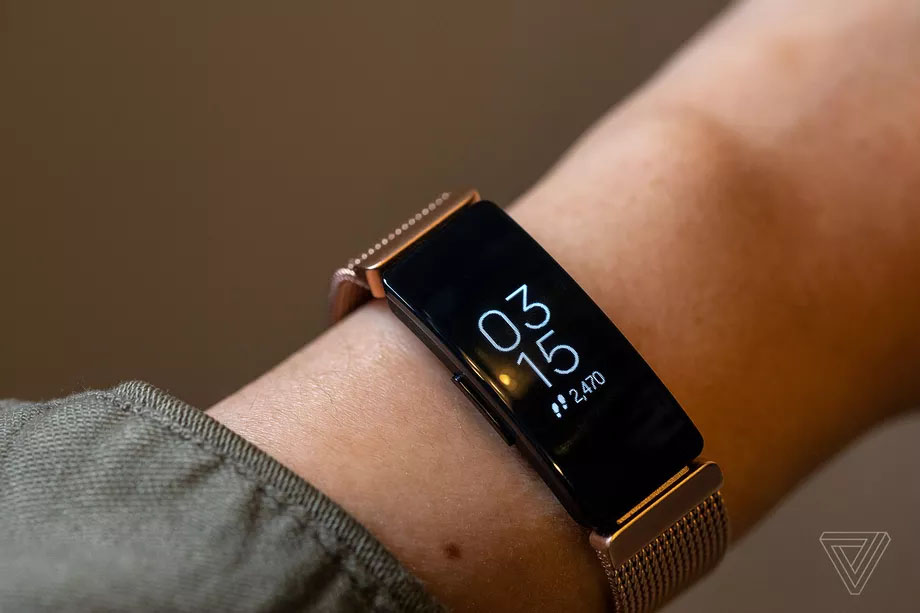
Google has just announced that it’s buying wearable company Fitbit for $2.1 billion. In a blog post announcing the news, Google SVP of devices and services Rick Osterloh said that the Fitbit purchase is “an opportunity to invest even more in Wear OS as well as introduce Made by Google wearable devices into the market.”
The news comes just days after a report from Reuters, which claimed that Google was in talks to buy the popular fitness tracker company.“FITBIT HEALTH AND WELLNESS DATA WILL NOT BE USED FOR GOOGLE ADS.“
Under the deal, Fitbit will be joining Google itself. (It’s similar to the current situation with Nest, which is wholly under Google now, compared to when Alphabet had originally acquired the smart home company but left it as a separate division under the corporate structure.)
According to a separate press release issued by Fitbit, the company will still take privacy for health and fitness data seriously, noting that “Fitbit health and wellness data will not be used for Google ads.”
The acquisition makes a lot of sense: Google has spent years trying (and largely failing) to break into the wearables market with its Wear OS platform, but it’s struggled to make a real impact.
Fitbit’s hardware chops have always been great, giving Google a much stronger foundation to build on for future Android-integrated wearables devices. And the company’s strong focus on fitness tracking could naturally be integrated into Google’s existing Google Fit apps, too, offering Google a solid alternative to the Apple Watch’s deep fitness tracking integration with the iPhone.
On the flip side, Google’s software skills and wide developer support could help Fitbit’s smartwatches like the Versa get a little smarter, alongside the deeper software integration with Android that a closer relationship could offer.
The Fitbit purchase isn’t the only recent investment Google’s made into fitness-focused wearables, either: back in January, the company spent $40 million to buy some unknown smartwatch technology from Fossil based on tech that Fossil acquired when it bought wearable maker Misfit back in 2015.
Source: The Verge
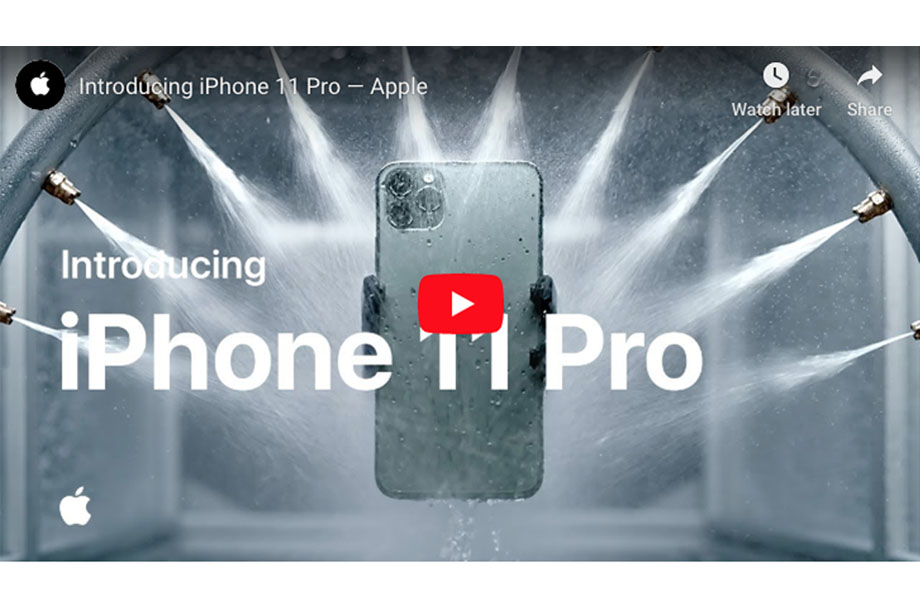
Apple had a very busy day today during its special event, introducing a lot of new devices. It’s also premiered its first promo videos for these, so let’s take a look at what the company has in store for us.
First off, the iPhone 11 Pro gets an introduction, in this video, talking about its construction, durability, the A13 chip, battery life, the new triple rear camera system and redesigned Camera app UI, Night Mode, video recording and editing, the new Super Retina XDR display, privacy and Face ID.
Next up, we have the cheapest iPhone of 2019, the non-Pro iPhone 11. Its introductory video shows us some of its striking colors, and also focuses on the new dual rear cameras, water resistance, video recording quality, slo-mo selfies, Face ID, speed, Night Mode, and the display and battery life.
Finally, the Apple Watch Series 5 video keeps insisting that the device tells time… while also doing a bunch of other things, like taking calls, controlling IoT devices, and locating you via GPS. It also wakes you up, lets you pay for stuff, and plays music – oh, and there’s Siri too. Texting and fitness features also get a mention. Check it out for yourself:
Source: Gsm Arena